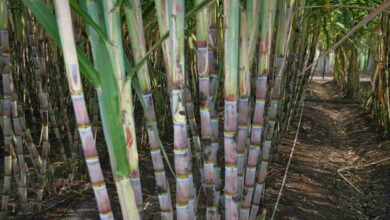Ginger Farming: Adopt these 3 methods in ginger cultivation, there will be good production
Ginger Farming: India extensively uses ginger as a spice and medicine, making its cultivation crucial. There is always a need, domestically and internationally, for farmers to make a profit from ginger production. There are many advantages to growing ginger, but a successful harvest requires the right sowing and care. Learn about the three main methods of planting ginger!

The Right Soil and Environment for Ginger
Warm, humid weather is perfect for growing ginger. Temperatures between 20 and 30 degrees Celsius are ideal for its growth. Also, for the plant to thrive in a favorable environment, the humidity level should be between 70 and 90 percent. Although sandy loam soil is considered the best for growing ginger, it can also thrive in clay and sandy red soil. However, since this can have a detrimental effect on production, ginger should not be grown in the same area continuously.
Main Techniques for Planting Ginger
1. Bed Technique
The bed technique involves creating a bed three meters long and 1.20 meters wide. The height of this bed is 15 to 20 cm above the floor. To ensure proper drainage, a 50 cm wide groove is made around the bed. In this process, the seeds are planted at a depth of 10 cm, and the plants must be spaced at a certain distance from each other. The unique advantage of this method is that it works well with drip irrigation, which conserves water and promotes healthy plant growth.
2. Ridge Technique
The ridge approach involves digging small holes at a distance of 60 cm and filling them with compost. Next, ginger seeds are planted at a distance of 20 cm, and then soil is added to form ridges. While using this strategy, it is important to remember that the seeds must be buried at a depth of 10 cm for effective germination and healthy plant growth. Most farmers who use compost to increase soil fertility use this technique.
3. Levelling Technique
The leveling approach uses gentle, sloping land, with ridges spaced 30 cm apart and plants spaced equally (20 cm). Seeds are planted at a depth of 10 cm. Although this approach requires more water, it can also be effective provided the drainage is adequate.





